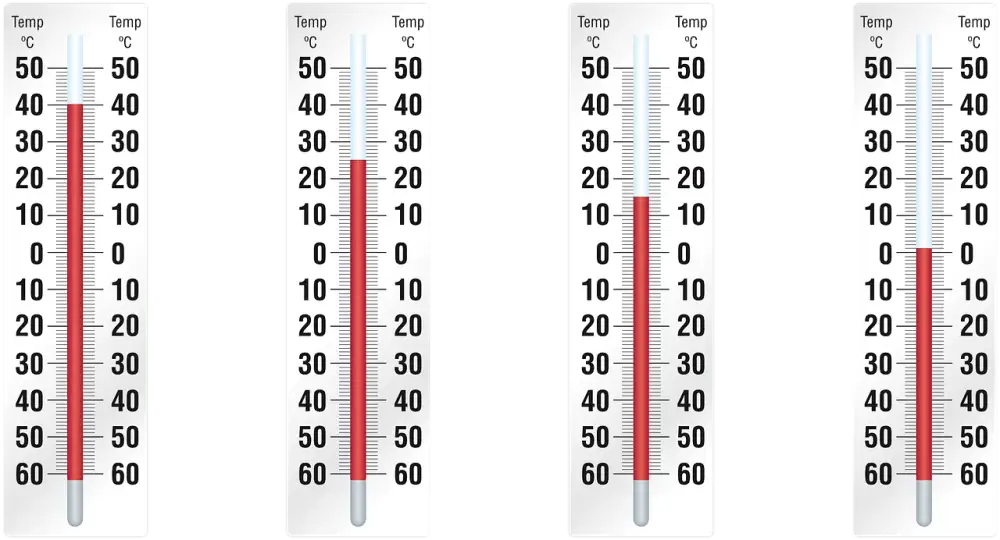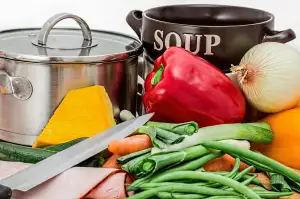Mastering Steak Temps: A Guide to Achieving the Perfect Doneness Levels

- Rare: A juicy and tender steak with a cool, red center
- Medium Rare: A steak with a warm, red center that is slightly firmer
- Medium: A steak with a pink center that is firm and juicy
- Medium Well: A steak with a slightly pink center that is mostly firm
- Well Done: A steak with no pink, cooked throughout and firm
- Tips for achieving the perfect steak temp
- Pairing steak temps with different cuts of meat
- How to check steak temps using a meat thermometer
- Common misconceptions about steak temps
Cooking the perfect steak is an art form that requires precision and skill. One of the key factors in achieving steak perfection is understanding the different levels of doneness, also known as steak temps. From rare to well done, each level offers a unique texture, flavor, and juiciness. Whether you prefer a tender and juicy center or a fully cooked piece of meat, mastering steak temps is essential for any aspiring grill master or home cook. In this guide, we will explore the various steak temps and provide tips on how to achieve your desired level of doneness every time you cook a steak. So get ready to embark on a culinary journey where food dreams become delectable realities!
Rare: A juicy and tender steak with a cool, red center
When it comes to steak temps, rare is the pinnacle of perfection for many meat lovers. A rare steak is cooked just enough to seal in the flavors while maintaining a cool, red center. The result is a melt-in-your-mouth texture that is incredibly juicy and tender. The key to achieving this doneness level is to cook the steak quickly over high heat, allowing the outside to develop a delicious crust while keeping the inside rare. It's important to note that cooking a rare steak requires precision and attention to detail. Overcooking even by a few seconds can push it into medium-rare territory, altering its texture and taste. So if you're someone who enjoys the pure essence of beef with every bite, then mastering the art of cooking a rare steak is an essential skill to have in your culinary repertoire.
Medium Rare: A steak with a warm, red center that is slightly firmer
Medium Rare: A steak with a warm, red center that is slightly firmer. Medium rare is often considered the ideal doneness level for steak connoisseurs. The center of the steak will be warm and red, indicating that it is cooked to perfection while still retaining its juiciness. The texture of a medium rare steak is slightly firmer compared to rare, providing a satisfying bite. This doneness level allows the natural flavors of the meat to shine through while still ensuring tenderness. Achieving medium rare requires careful timing and attention to detail during cooking. It is recommended to sear the steak on high heat for a short period of time, then finish it off in the oven or grill until it reaches an internal temperature of around 135°F (57°C). Resting the steak for a few minutes before slicing will allow the juices to redistribute and result in a deliciously succulent and flavorful meal.
Medium: A steak with a pink center that is firm and juicy
Medium: A steak with a pink center that is firm and juicy. Medium doneness is often considered the perfect balance between tenderness and flavor. The pink center indicates that the steak has been cooked to an internal temperature of around 145°F (63°C). At this stage, the meat will have a slightly firmer texture compared to rare or medium-rare steaks. The juices are sealed within, resulting in a succulent and flavorful bite. It's important to note that overcooking can lead to a dry and tough steak, so be cautious not to exceed the desired temperature. Achieving medium doneness requires careful monitoring and timing during cooking, but it's well worth the effort for steak enthusiasts seeking a deliciously juicy outcome.
Medium Well: A steak with a slightly pink center that is mostly firm
For those who prefer a steak that is cooked more thoroughly, the medium well doneness level is the way to go. This steak will have a slightly pink center, but it will be mostly firm to the touch. The juices will still be present, though not as abundant as in the rarer doneness levels.
Achieving a medium well steak requires cooking it for a longer period of time compared to medium rare or medium steaks. This allows the heat to penetrate deeper into the meat, resulting in a firmer texture and less pinkness in the center.
To achieve this doneness level, cook your steak for about 4-5 minutes per side on high heat, depending on its thickness. Use a meat thermometer to ensure that the internal temperature reaches around 150-155°F (65-68°C). This will ensure that the steak is cooked throughout while still retaining some juiciness.
Pairing cuts of meat with medium well doneness can vary depending on personal preference. However, cuts like striploin, ribeye, or T-bone are often recommended as they have enough marbling and fat content to remain juicy even when cooked to this level.
Remember that cooking times may vary depending on factors such as the thickness of your steak and the type of grill or pan you're using. It's always best to rely on a meat thermometer to accurately determine the doneness level and avoid overcooking your steak.
By mastering how to achieve different doneness levels, you can cater to everyone's preferences when it comes to enjoying a perfectly cooked steak. So whether you prefer rare, medium rare, medium, medium well, or well done - there's a perfect steak temp waiting for you!
Well Done: A steak with no pink, cooked throughout and firm
Well Done: A steak with no pink, cooked throughout and firm. For those who prefer their steak fully cooked, the well-done temperature is the way to go. This level of doneness ensures that the steak is thoroughly cooked, with no traces of pink in the center. The meat will be firm to the touch and have a consistent color throughout. While some may argue that cooking a steak to well done can result in a drier texture, there are ways to ensure it remains juicy and flavorful. Opt for cuts with more marbling or consider marinating the steak beforehand to add moisture and enhance the flavor. Keep in mind that cooking times may be longer for well-done steaks, so be patient and use a meat thermometer to check for doneness accurately. Achieving a perfect well-done steak requires careful attention and precision, but when done right, it can still be a delicious and satisfying culinary experience.
Tips for achieving the perfect steak temp
To achieve the perfect steak temperature, follow these tips:
Pairing steak temps with different cuts of meat
Pairing steak temps with different cuts of meat is essential to achieving the best flavor and texture. For lean cuts like filet mignon or sirloin, rare to medium-rare temps work best as they retain tenderness. Ribeye and strip steaks, with their marbling, can handle medium temps for a perfect balance of juiciness and tenderness. For tougher cuts like flank or skirt steak, cooking them to medium-well or well-done will help break down the connective tissues for a more tender bite. Remember, matching the right temp with the right cut is key to unlocking the full potential of your steak.
How to check steak temps using a meat thermometer
To check the internal temperature of your steak accurately, a meat thermometer is an essential tool. Here's how to use it:
- Insert the thermometer probe into the thickest part of the steak without touching the bone.
- Make sure the probe is positioned in the center for an accurate reading.
- Wait for a few seconds until the thermometer stabilizes and gives you a reading.
- For rare, aim for 125°F (51°C); medium rare, 135°F (57°C); medium, 145°F (63°C); medium well, 150°F (66°C); well done, 160°F (71°C).
Remember that these temperatures are just guidelines and personal preference plays a role. With practice, you'll become skilled at achieving your desired steak doneness every time!
Common misconceptions about steak temps
1. "Rare steaks are unsafe to eat": Many people believe that rare steaks are not safe to consume because they are not fully cooked. However, if the steak is sourced from a reputable supplier and handled properly, rare steaks can be enjoyed safely.
2. "Well-done steaks are the best": While some individuals prefer well-done steaks, it is important to note that cooking a steak to well-done can result in a loss of tenderness and juiciness. It is all about personal preference, but exploring different doneness levels can enhance your steak experience.
3. "Medium-rare means undercooked": Medium-rare is often misunderstood as undercooked because it has a warm, red center. However, this level of doneness ensures a perfect balance of tenderness and flavor.
4. "You can tell the doneness by color alone": Although color can be an indicator of doneness, it shouldn't be relied upon solely. Factors such as meat thickness and cooking method also play a significant role in determining the internal temperature.
5. "Resting time doesn't matter for doneness": Resting time after cooking allows the juices to redistribute within the steak, resulting in a more flavorful and tender bite. Neglecting this step may affect the overall doneness and texture of the steak.
It's essential to debunk these misconceptions and understand that achieving the perfect steak temp is subjective and depends on individual preferences. Experimentation and practice will help you discover your ideal level of doneness for an unforgettable dining experience.
Conclusion
Mastering the art of cooking steak to perfection requires understanding the different doneness levels and how they affect the taste and texture of the meat. By following the guidelines for rare, medium rare, medium, medium well, and well done, you can ensure that your steak is cooked to your desired level of doneness. Remember to use a meat thermometer to check the internal temperature accurately. Experiment with different cuts of meat and pair them with appropriate temps for an unforgettable dining experience. With practice and attention to detail, you can become a master at cooking steaks that are juicy, tender, and cooked just right. So fire up that grill or heat up that skillet, and get ready to impress your family and friends with perfectly cooked steaks every time!
Published: 22. 11. 2023
Category: Food



